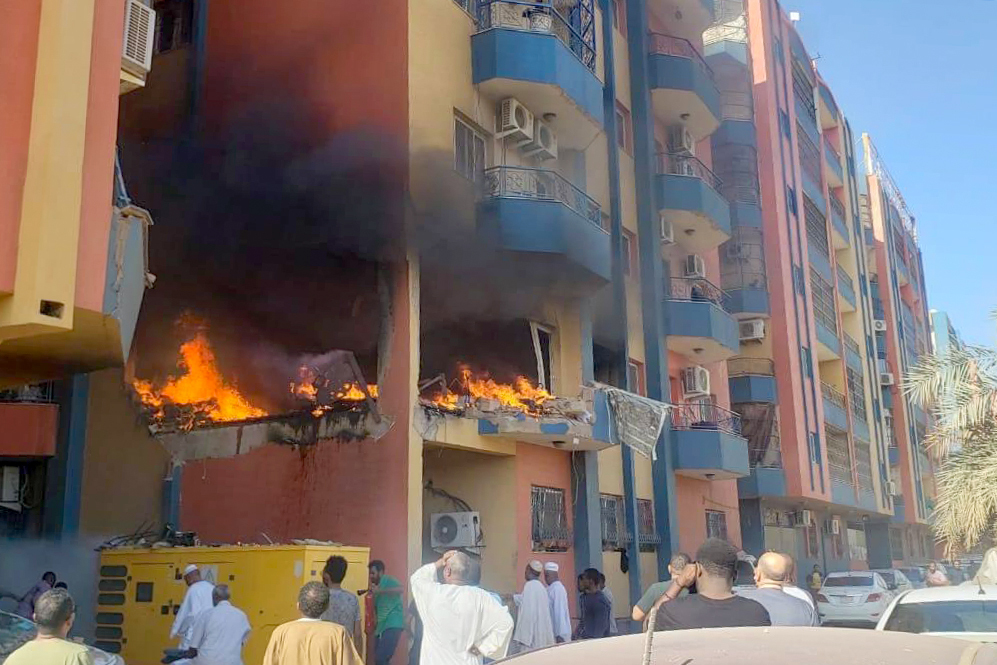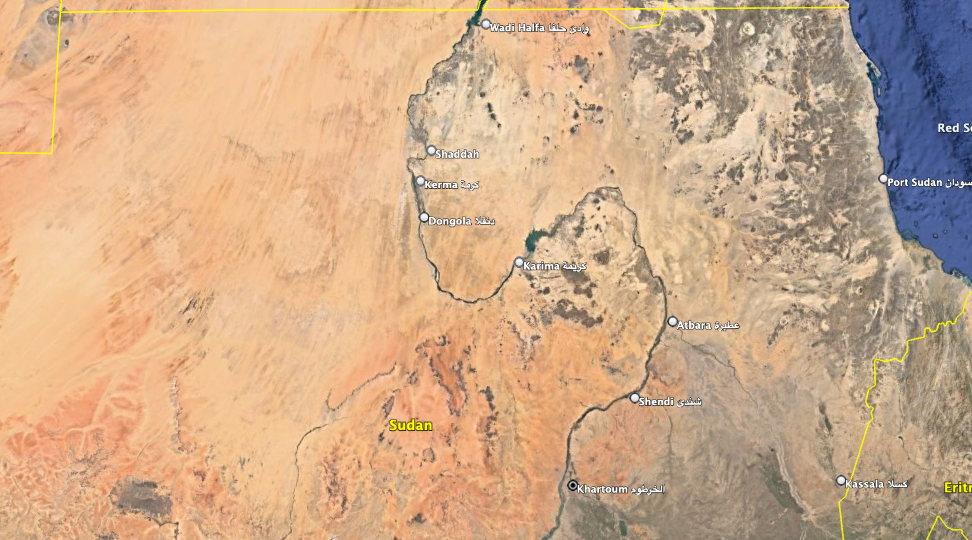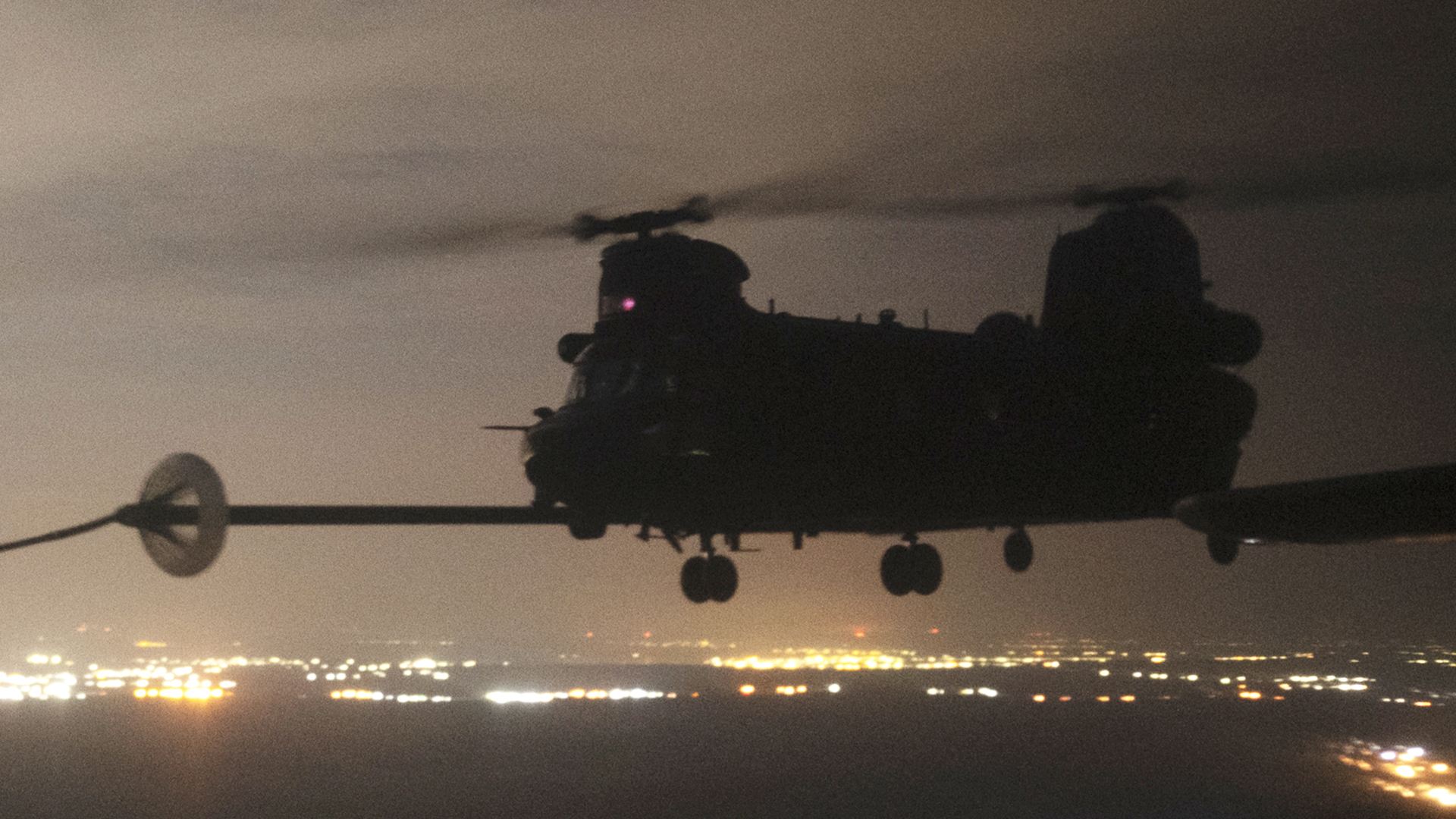The U.S. Embassy in Khartoum, Sudan was evacuated Saturday by U.S. special operations forces (SOF) as nine days of ongoing fighting between two rival factions presented increasing danger to the people working there and their dependents.
No one was injured in the rescue and the aircraft involved, including three Night Stalker MH-47 Chinook helicopters, took no fire either entering or leaving Khartoum, LTG D.A. Sims, director of operations, Joint Staff J3, told reporters, including from The War Zone, during a late night press briefing Saturday. The evacuation was ordered by U.S. President Joe Biden.
“As a result of the fighting between the Sudanese Armed Forces (SAF) and the Rapid Support Forces (RSF), the United States has temporarily suspended operations – and I want to stress temporarily suspended – operations at our embassy in Khartoum,” said Under Secretary of State for Management John Bass during a late Saturday night press conference. “The widespread fighting has caused significant civilian deaths and injuries. There’s been substantial damage to essential infrastructure, including, importantly the civilian airport in the heart of the city.”
As a result “of the intensity of the conflict, and the challenges that our diplomatic personnel were experiencing in conducting basic operations, and the uncertainty about the availability of key supplies, like fuel and food going forward, we reluctantly decided it was time to suspend operations and with tremendous support from our professional military colleagues at DOD,” said Bass. “We evacuated all of the U.S. personnel and dependents assigned to Embassy Khartoum.”
“Given that uncertain environment, the absence of any commercial air, the absence of any charter aircraft capabilities, and the absence of really feasible overland road routes to get out of the country, we concluded the only way we could do this safely for all of our diplomatic personnel was to rely on the capabilities of our military colleagues. We don’t anticipate those security conditions are going to change in the near term, even though we’re going to continue to do everything we can to bring this fighting to a conclusion.”

In all, more than 100 SOF troops took part in the rescue of fewer than 100 embassy personnel, Sims and Bass said. The Associated Press reported that about 70 people were evacuated in total. That included members of the Marine Corps Embassy Support Group Region 6, who had been guarding the embassy.
“I’d also like to take this opportunity to shine an especially appreciative light on the incredible duty carried out by the U.S. Marines who have been protecting and defending the U.S. Embassy in Khartoum,” said Assistant Secretary of Defense for Special Operations and Low-Intensity Conflict Chris Maier. “The Marines who protect many of our embassies overseas do not often get the credit they deserve. Their courage under duress represents America at its best again in this instance.”
The rescue began at 9 A.M. Eastern Standard Time, when “a contingent of U.S. forces lifted off from Djibouti and landed in Ethiopia,” Sims said. “The aircraft, including three MH-47 Chinooks, refueled in Ethiopia before flying approximately three hours to Khartoum. The evacuation was conducted in one movement via rotary wing. The operation was fast and clean, with service members spending less than an hour on the ground in Khartoum. As we speak, the evacuees are safe and secure.”
The flight was about 800 miles each way, Sims said.
Though the rescue went smoothly, there was one problem, said Sims.
“We had a helicopter that was that had an issue trying to connect to fuel on the way back but they were able to remedy that and connected to the fuel with no issue and continued on,” said Sims. “We did not have one down.”
Neither Sims nor Maier said what other types of aircraft were involved in the rescue. Flight tracking sites showed that at least three U.S. Air Force MC-130s were flying over Khartoum. We reached out to the Pentagon and U.S. Air Forces in Europe-U.S. Air Forces Africa (USAFE) for more details. We will update this story with any information provided.
Aircraft had been pouring into the sprawling Camp Lemonnier in Djibouti for days now, with many transatlantic sorties of C-17s and special operations C-130s making their way to the outpost on the Horn of Africa where the U.S. stages many of its regional operations. With such a broad set of movements, an impending evacuation mission, or at least a major contingency force for such a mission being put into place, was abundantly clear. Any operation would have included a wide array of aerial assets beyond the MH-47s and MC-130s, including tactical platforms capable of kinetic strikes, such as fighter aircraft and AC-130 gunships, should things go awry. Many tankers and intelligence, surveillance and reconnaissance aircraft would have also been overhead or in the general vicinity.
Though the embassy personnel were safely evacuated, many more U.S. citizens remain in Sudan as the paramilitary RSF clash with Sudanese SAF units loyal to Gen. Abdel Fattah al-Burhan, the head of Sudan’s transitional governing Sovereign Council. The RSF leader, Gen. Mohamed Hamdan Dagalo, known as Hemedti, is also the deputy head of the Sovereign Council. With these two leaders sharing power, it had been planned that the RSF would merge with the regular army.
With those plans now in tatters, U.S. citizens remaining in the country are scrambling to leave.
To help facilitate their evacuation, the Pentagon is “considering actions that may include use of intelligence, surveillance and reconnaissance capabilities to be able to observe and detect threats,” said Maier.
In addition, the Pentagon is also considering sending naval assets outside the Port of Sudan to potentially help Americans who arrived at the port, located about 415 miles northeast of Khartoum on the Red Sea. And the Pentagon is also establishing a “deconfliction cell” at the headquarters of U.S. Africa Command in Stuttgart, Germany, to “focus primarily on the overland route,” Maier said.

However, getting Americans out of Sudan will be difficult.
“As a result of that uncertain security picture as a result of the unavailability of the civilian airport, we don’t foresee coordinating a US government evacuation for our fellow citizens in Sudan at this time, or in the coming days,” said Bass. “However, although we don’t foresee coordinating that evacuation, we certainly continue to be in close touch with many American citizens resident in Khartoum and elsewhere in Sudan, to give them our best assessment of the security environment, and to encourage them to take appropriate precautions, to the best of their ability in and around that environment.”
In a tweet earlier Saturday night, RSF claimed that “in coordination with the US forces mission consisting of 6 planes for the purpose of evacuating diplomats and their families,” it “supervised the necessary arrangements that preceded the evacuation process, confirming its full cooperation with all diplomatic missions, standing by them and providing the necessary means of protection to ensure their safe return to their countries.”
During the press conference, Bass denied that claim.
“They cooperated to the extent that they did not fire on our service members in the course of the operation,” he said. “I would submit that as much in their self interest as anything else.”
The fighting has already claimed more than 400 lives, according to The Associated Press. And, as we wrote about previously, RSF, recently claimed to have taken control of an airbase in the north of the country where Egypt has deployed MiG-29M/M2 Fulcrum multirole fighter jets. Satellite imagery obtained by The War Zone shows at least one of these aircraft destroyed and it is likely that others are badly damaged or destroyed, as well.
With no end in sight to this fighting, we will monitor the situation and update this story when more developments unfold.
Contact the author: howard@thewarzone.com
